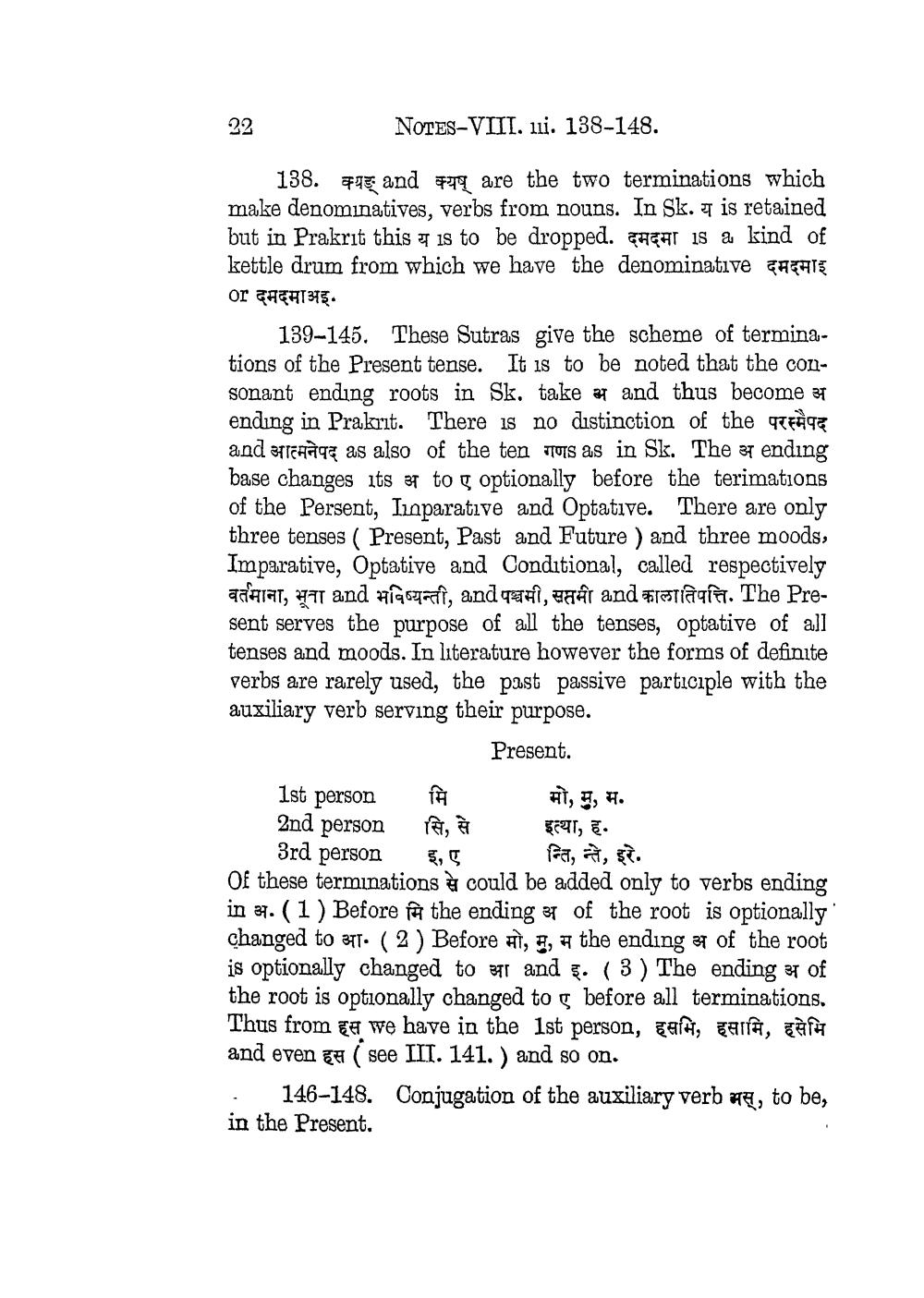________________
22
NOTES-VIII. 1i. 138-148.
138. क्यङ् and क्यष् are the two terminations which make denominatives, verbs from nouns. In Sk. T is retained but in Prakrit this is to be dropped. qaga is a kind of kettle drum from which we have the denominative TAAIE or दमदमाअइ.
139-145. These Sutras give the scheme of terminations of the Present tense. It is to be noted that the consonant ending roots in Sk. take ay and thus become at ending in Prakrit. There is no distinction of the CFATT and 3TTERETE as also of the ten tots as in Sk. The 37 ending base changes its 31 to T optionally before the terimations of the Persent, Iuaparative and Optative. There are only three tenses ( Present, Past and Future ) and three moods, Imparative, Optative and Conditional, called respectively qamrat, pat and Hiasanii, and cutti, gâr and FTATIF. The Present serves the purpose of all the tenses, optative of all tenses and moods. In literature however the forms of definite verbs are rarely used, the past passive participle with the auxiliary verb serving their purpose.
Present.
1st person À I, 9, H. 2nd person E, 21, E.
3rd person 5, fa, , si. Of these terminations à could be added only to verbs ending in 27. (1) Before the ending 37 of the root is optionally changed to 311. ( 2 ) Before HÌ, H, the ending 37 of the root is optionally changed to str and s. ( 3 ) The ending 37 of the root is optionally changed to g before all terminations. Thus from a we have in the 1st person, cah, GAIÀ, and even a (see III. 141.) and so on. . 146–148. Conjugation of the auxiliary verb , to be, in the Present.




